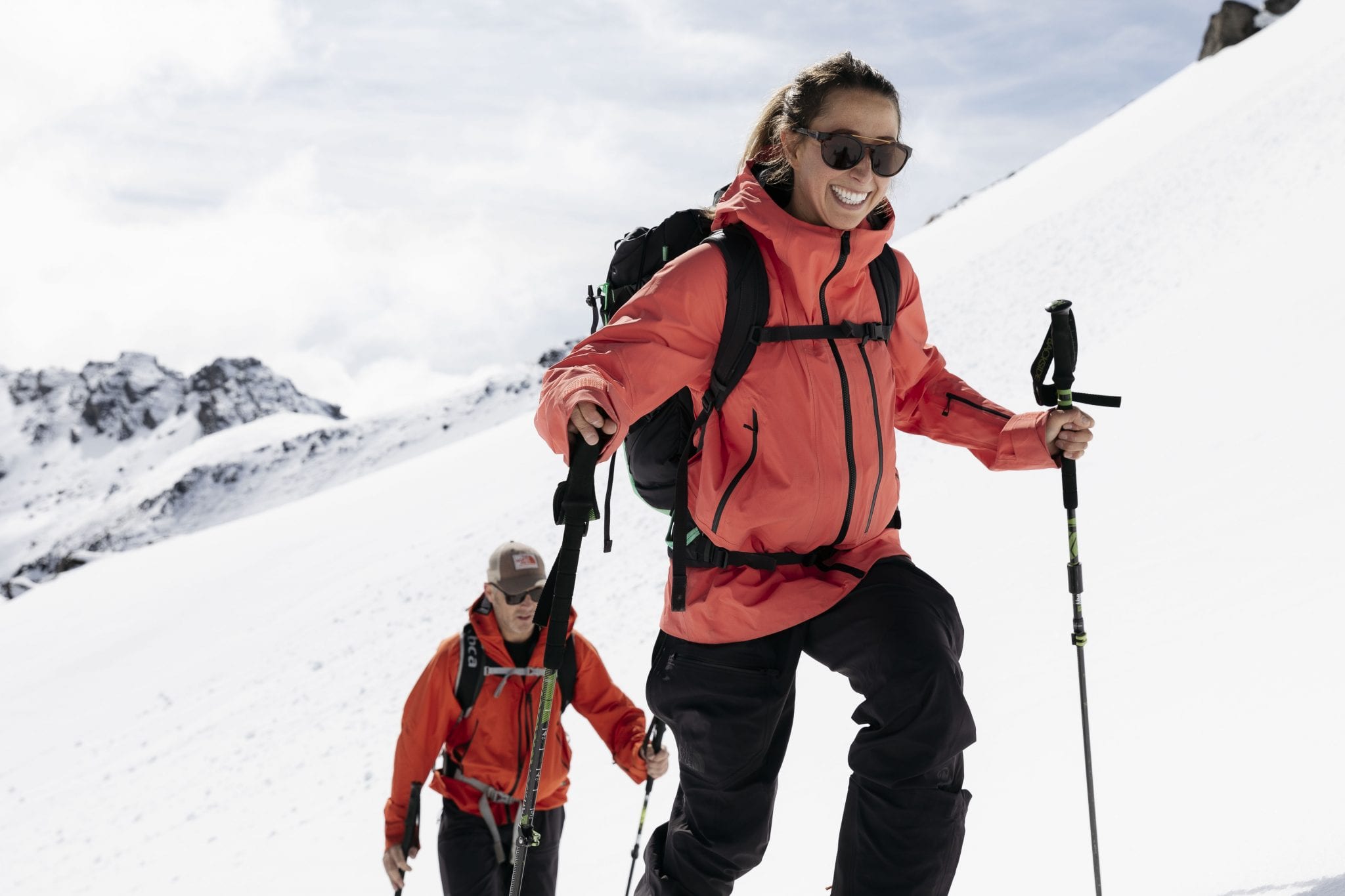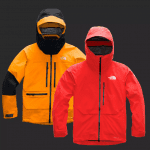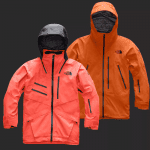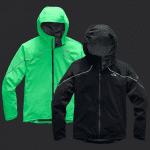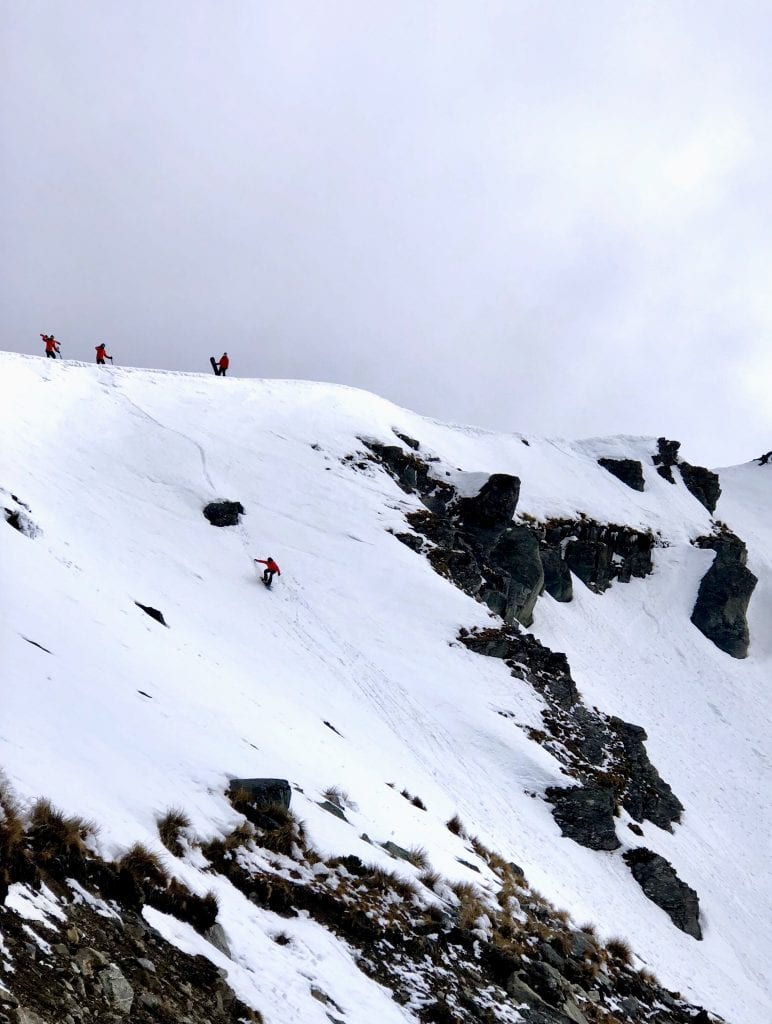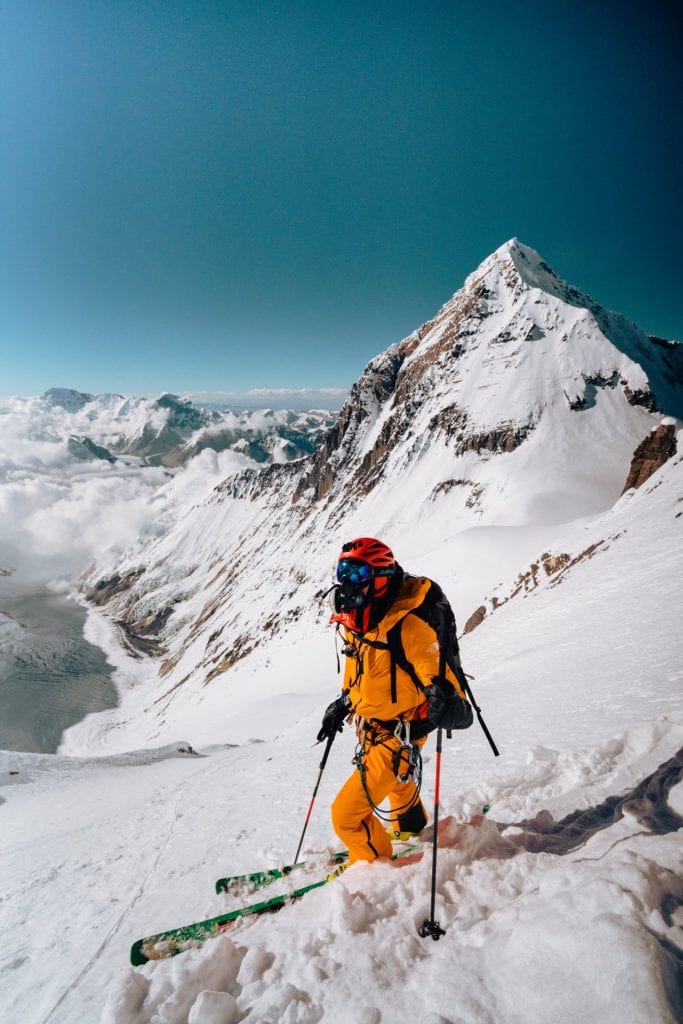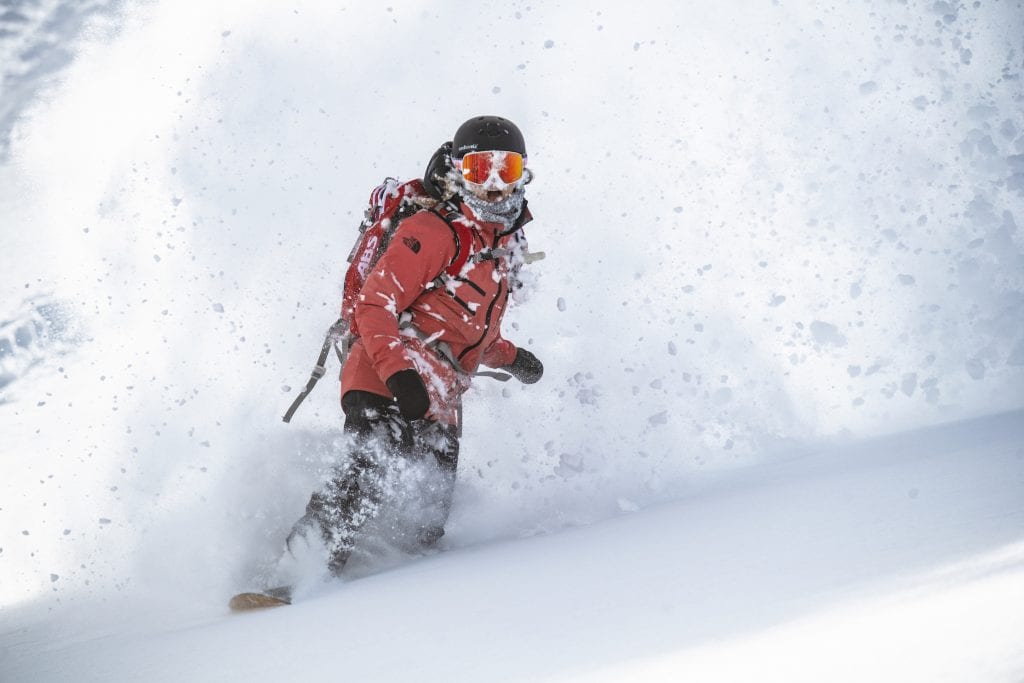There’s a lot of hype around The North Face’s newest offering, FUTURELIGHT, a technical outerwear fabric that’s supposed to be ultra-breathable as well as waterproof, durable, sustainable, soft and super lightweight.
That’s a long list of things that one fabric is supposed to be. But The North Face are hoping for this fabric to be revolutionary in the outdoor world, in the same way that Gore-Tex and Lycra completely changed the game many moons ago. So much so they’ve named the fabric in full capitals for added confidence.
The product has been in the works for a few years, with a lot of science, a lot of testing and a lot of collaboration between The North Face and its band of bad ass outdoor athletes to get to what it is now.
It’s already climbed and skied Lhotse in the Himalaya, with both Jim Morrison and Hilaree Nelson putting it to the test on the fourth highest mountain in the world.
The test
We put it through its paces at the tail end of the season in New Zealand. With mild temperatures, light winds and no rain, it wasn’t exactly the gnarliest conditions of all time, but it did present an opportunity to try out the versatility of the fabric.
And I, your loyal and faithful Snowsbest representative, tested it out alongside the likes of athletes such as Anna Segal, Sam Smoothy, Janina Kuzma, Michaela Davis Meehan, Jossi Wells, Fraser McDougall and more. So you know the big guns were there to see exactly what it could do, plus there was me bringing in the whole ‘commoner’ perspective.
The fabric
FUTURELIGHT isn’t just designed for skiers and boarders. There are several outerwear series to suit your adventure sport of choice, whether it be running, snow sports or climbing, with different thicknesses of fabric for each activity.
The North Face have made a fancy new fibre on a nano scale and woven it together into what the techy people call a ‘membrane’- the part of the jacket that does what jackets are supposed to do. This fibre means that the material is stretchy, breathable and super lightweight without sacrificing any performance.
It can be pouring rain outside, and you will remain dry as the metaphorical bone.
It’s designed to be so breathable that you never have to remove the jacket, even if you get warm while you’re hiking in the backcountry/snow-shoeing/doing or whatever it is that normally gets you sweaty on the slopes. The holes in the membrane are small enough to allow heat and sweat to escape while not letting any rain in.
90% of the fabric is also made from recycled materials, in solar-powered factories, with non-fluorinated substances (i.e. PFAs, the toxic chemicals normally found in waterproof fabrics).
This, happily, makes it sustainable, with TNF aiming to have the highest-performing product with the lowest footprint.
The good bits
- FUTURELIGHT options
- FUTURELIGHT options
- FUTURELIGHT options
The North Face weren’t kidding when they said FUTURELIGHT was waterproof. The ski pants – which have suspenders attached, along with one of those handy zip-down bum flaps for easy bathroom breaks – are my new obsession.
I’ve been through my fair share of ski pants, through a variety of brands, but have never managed to find a pair that doesn’t end the day being a bit, well, soggy.
The North Face FUTURELIGHT pants are a game changer.
No matter how much I sat down or fell over in the slushy spring snow conditions, my legs, butt and base layer stayed dry and I stayed increasingly thrilled. They’re a shell, so incredibly lightweight, flattering, comfortable and easy to layer up underneath.
In a way, they kept my legs so light that it somehow felt easier to ski.
The jacket was equally waterproof and yes, breathable. The spring conditions were mixed, with the sun coming in and out, I went quickly from cold to hot. And when I was warm, I was never sweaty, plus it was a comfortable fit, just as soft and lightweight as the pants.
Backcountry athletes on the trip just wore a base layer and the shell jacket to skin up and ski down with no complaints.
One thing that also has to be mentioned is just how quiet the fabric manages to be.
If you’ve ever tried to snowshoe through the forest, or skin up a mountain while also talking to a friend, it might be tough to hear them over the regular swishing of heavy fabric. That’s far from the case with FUTURELIGHT, which is so light and soft that it’s essentially silent – a surprising little game-changer.
- Testing the slopes at Cardrona
- Hilaree Nelson in the Himalaya
- The Bringadine Series. Pic: Blake Jorgensen
The need to know
It’s not cheap. The FUTURELIGHT ski jacket lowest price comes in at the AUD$650 mark for women and $800 for men, with the cheapest set of ski pants hovering around the $550 mark (for now).
The top of the range Brigandine FUTURELIGHT bib pant for serious backcountry top out at $900 and the Brigandine jacket at $1200. Though trust us, everything has been thought of for this series, the jacket can practically groom the slopes for you.
There are ski jackets at lower price points coming out from March 1, 2020 though, so if you have your heart set on the new fabric but can’t quite justify the price, hold off for a few months or take the Afterpay option.
It’s also worth keeping in mind that they might be ski jackets but they are essentially exceptionally impressive shell jackets so you’ll need to wear a decent layer underneath if you’re resort skiing – which also have to be purchased if you don’t already have a good puffer or excellent thermals.
I was warm in New Zealand with The North Face Ventrix puffer underneath the Freethinker Pants and Freethinker Jacket, along with a thermal (but it was unseasonably warm at 6 degrees celcius). If you run cold, or if you’re heading overseas this Northern Hemisphere season, you may need another layer or two, or not, as we haven’t tested it in sub zero conditions like Hilaree Nelson and she survived Everest.
If you’re buying online, consider going down a size; they are sized pretty big, and you’ll still have plenty of room for any layers.
The bottom line
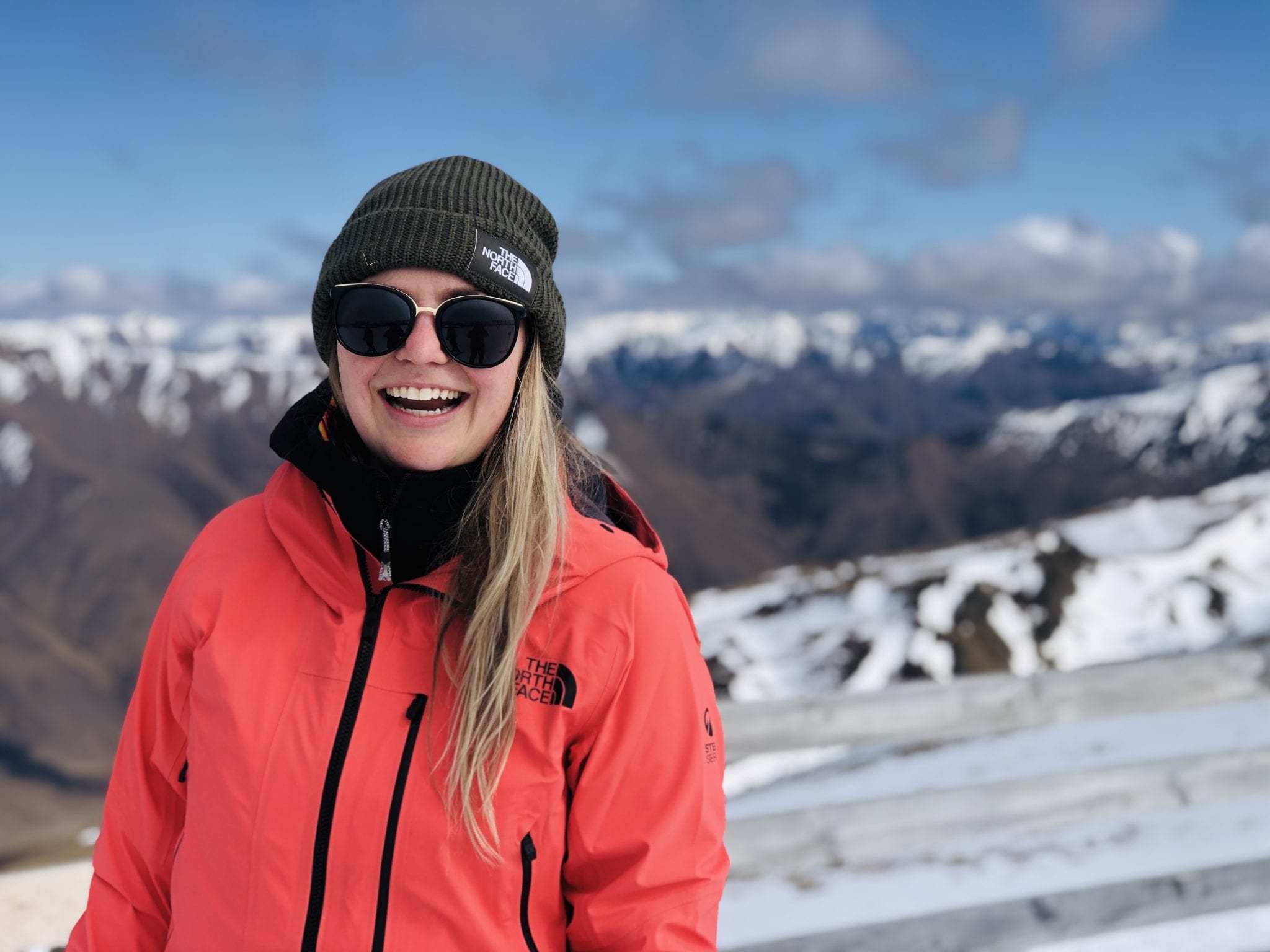
It’s very much worth popping into The North Face, if you have a store near you or at your ski destination, just to see the FUTURELIGHT fabric itself and try it on; that’s the only way to get a true feel for just how comfortable and lightweight it is. And it is.
If you’re the kind of person that’s always running a little warm, you’ll instantly fall in love. If you’re very tired of soggy ski pants, you’ll also be obsessed.
And while it’s marketed towards the more extreme athlete types out there – particularly those who are heading into the backcountry – it’s also perfectly suitable for those who prefer their chairlift time.
If you purchase the ski jacket and layer up accordingly, it’ll work well for any overseas holiday – plus if you really want to get your money’s worth, you can wear it hiking at home if the conditions call for it, or utitlise it on the home commute on those rainy days.
Find the full Australian FUTURELIGHT selection currently available online here.
Natalia was hosted by The North Face in Queenstown and Cardrona.
